This delicious gravy is ready in a flash! Make a simple roux with butter and flour before whisking in broth (or meat drippings or bouillon!) and a few basic seasonings. I re-tested the recipe to find the perfect balance of butter, flour, and liquid for a rich, silky gravy that is just the right consistency — neither too runny nor too thick. I also share lots of ways to adjust the recipe to your preference. Give my recipe a try if you need a last-minute gravy that is super fast, easy, and highly adaptable.
A reader, Tom, says: “This gravy recipe was super easy to adapt and scale up. I used some of the variation suggestions and added a few fresh herbs and a dash of soy sauce. It was perfect for my Thanksgiving dinner!” ★★★★★
Table of Contents
Key Ingredients For Easy Homemade Gravy
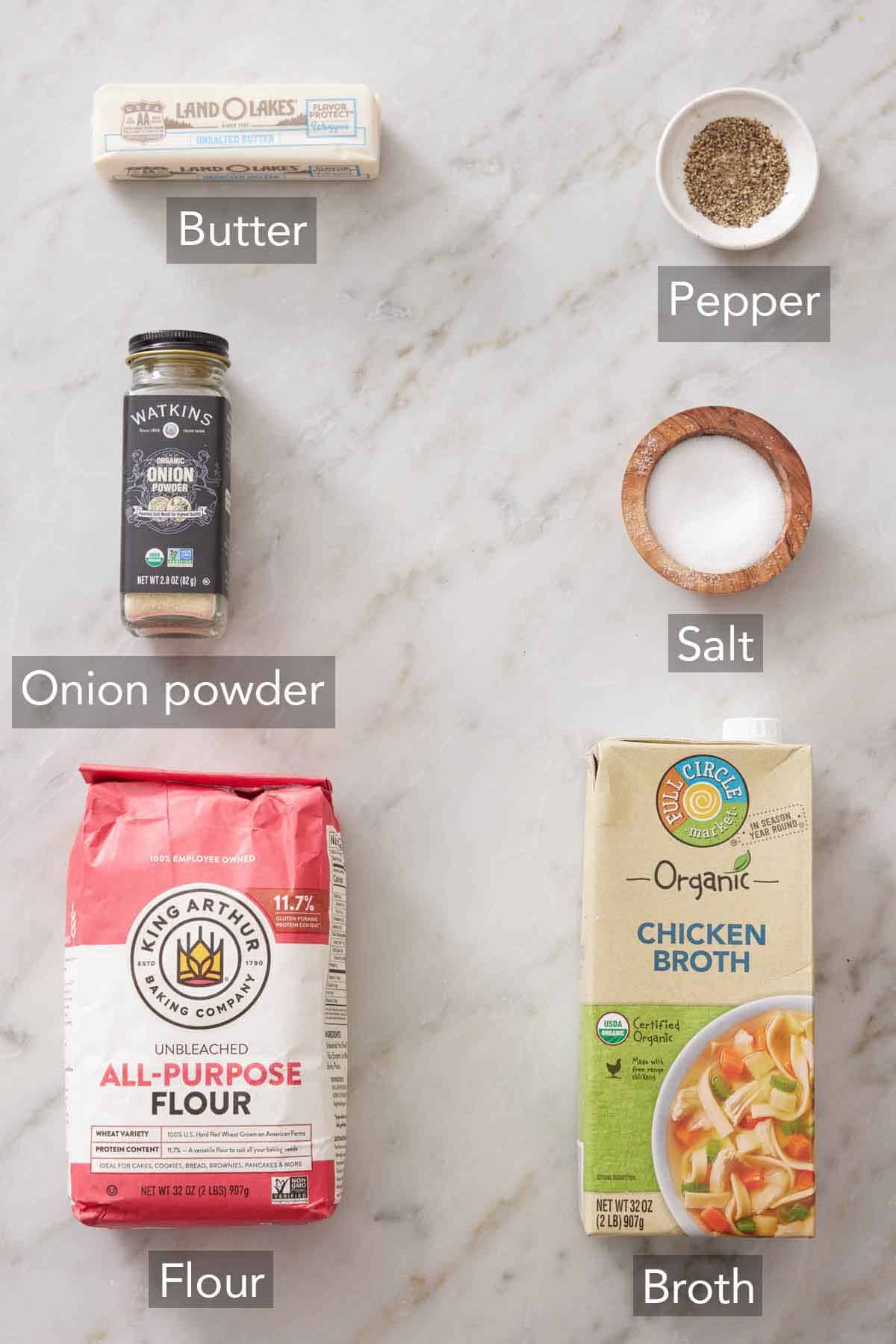
These are the main ingredients you need to make gravy from scratch. You can find the full list of ingredients and measurements in the recipe card below.
Roux — a roux is the foundation of a good gravy recipe, and is made by cooking fat and flour together until golden brown. (More about it below!) Unsalted butter is an easy way to make a roux for gravy, but you can certainly use other fats like the fat skimmed off the pan drippings, duck fat, or dairy-free butter to make the gravy.
Broth — warm broth, stock, or pan drippings from roasted meat are the main liquid component of gravy. It must be warm so it is easier to incorporate with the roux. Feel free to use any kind of homemade or store-bought broth or stock. You can also match the flavor of the gravy to the protein or meal you are serving. Chicken stock, chicken broth, beef broth, or seafood stock will all work. Use homemade turkey stock for Thanksgiving or holiday meals!
Seasonings — you don’t have to add much in the way of seasonings for this recipe if you want to keep it somewhat simple and complement the side dishes you’re adding the gravy to. I went with a simple trio of salt, black pepper, and onion powder to make a good foundation. See the Variations section for different ways to add even more flavor.
White Gravy vs Brown Gravy— What’s The Difference?
The main difference between the two is the type of liquid used. White gravy uses milk, whereas brown gravy uses broth or stock. White gravy is perfect served with my buttermilk biscuits, and even more delicious with the addition of browned sausage to make the perfect biscuits and sausage gravy. This recipe is for a brown gravy, which is perfect for your holiday meals or a classic side of mashed potatoes and gravy.
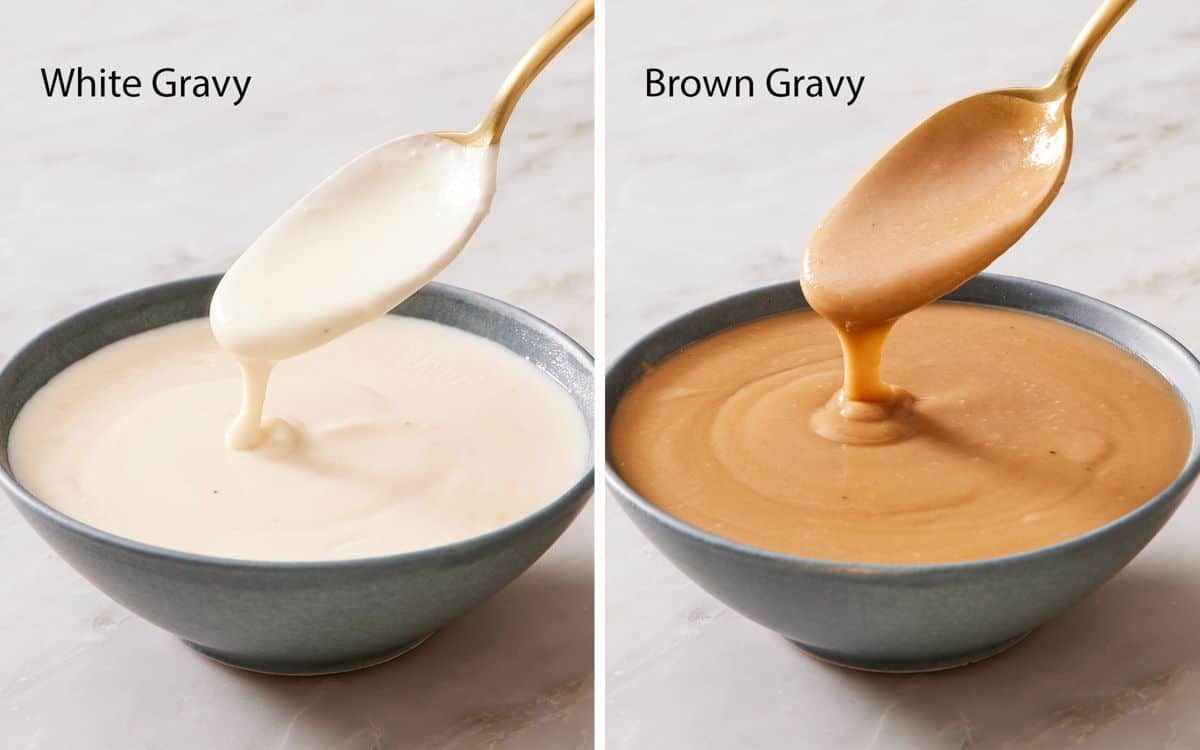
The Importance Of A Roux
For flour-based gravy like my recipe, a roux is the supporting foundation for the rest of the recipe. I can’t stress its importance enough for a perfectly velvety consistency! A roux is made of equal parts fat and flour and is used to thicken homemade gravies and sauces. You’ll cook the mixture long enough to toast the flour so that the gravy does not taste raw or powdery.
Toasting the roux also adds complexity to the gravy. If you like darker gravy, you can continue cooking the roux until it turns golden or dark brown, adding a deep nutty flavor to the gravy. Keep in mind that the longer you cook a roux, the less thickening power it will have, so a dark roux-based gravy will be thinner in consistency. You can see the difference in image below between a roux cooked for 2 minutes and one that was cooked until golden, about 4 minutes.

How To Adjust The Consistency
The consistency of gravy is very easy to adjust! This recipe makes a medium gravy that is thick enough to coat your turkey and potatoes but is still easily pourable. Here are the basic ratios and how to adjust the recipe based on your desired consistency:
- Thin gravy: 1.5 tablespoons fat, 1.5 tablespoons flour, 1 cup of liquid
- Medium gravy: 2 tablespoons fat, 2 tablespoons flour, 1 cup of liquid
- Thick gravy: 3 tablespoons fat, 3 tablespoons flour, 1 cup of liquid
Can I adjust the gravy after it is made? Yes! If the gravy is thicker than you’d like, thin it out by adding more broth or drippings. If it’s too thin, you can keep simmering it until it thickens to your preference, or add a cornstarch slurry to thicken it up faster. Dissolve 1 teaspoon of cornstarch in 1 tablespoon of water or broth, whisk it in, and cook until it bubbles and thickens. Repeat if needed.
Can I Use Drippings?
You can use pan drippings from several different types of roasted meats, such as roasted chicken, beef, pork, or a Thanksgiving roasted turkey. These drippings will add the most flavor to your gravy. Since gravy cooks up quickly, you can make it while the meat rests before carving.
Carefully pour off the drippings from the bottom of the roasting pan and measure them in a large liquid measuring cup or fat separator. Remove as much of the liquid fat as you can, then check the volume of drippings that you have left. If needed, add some broth, stock, or water so you have a total of 3 cups of liquid.
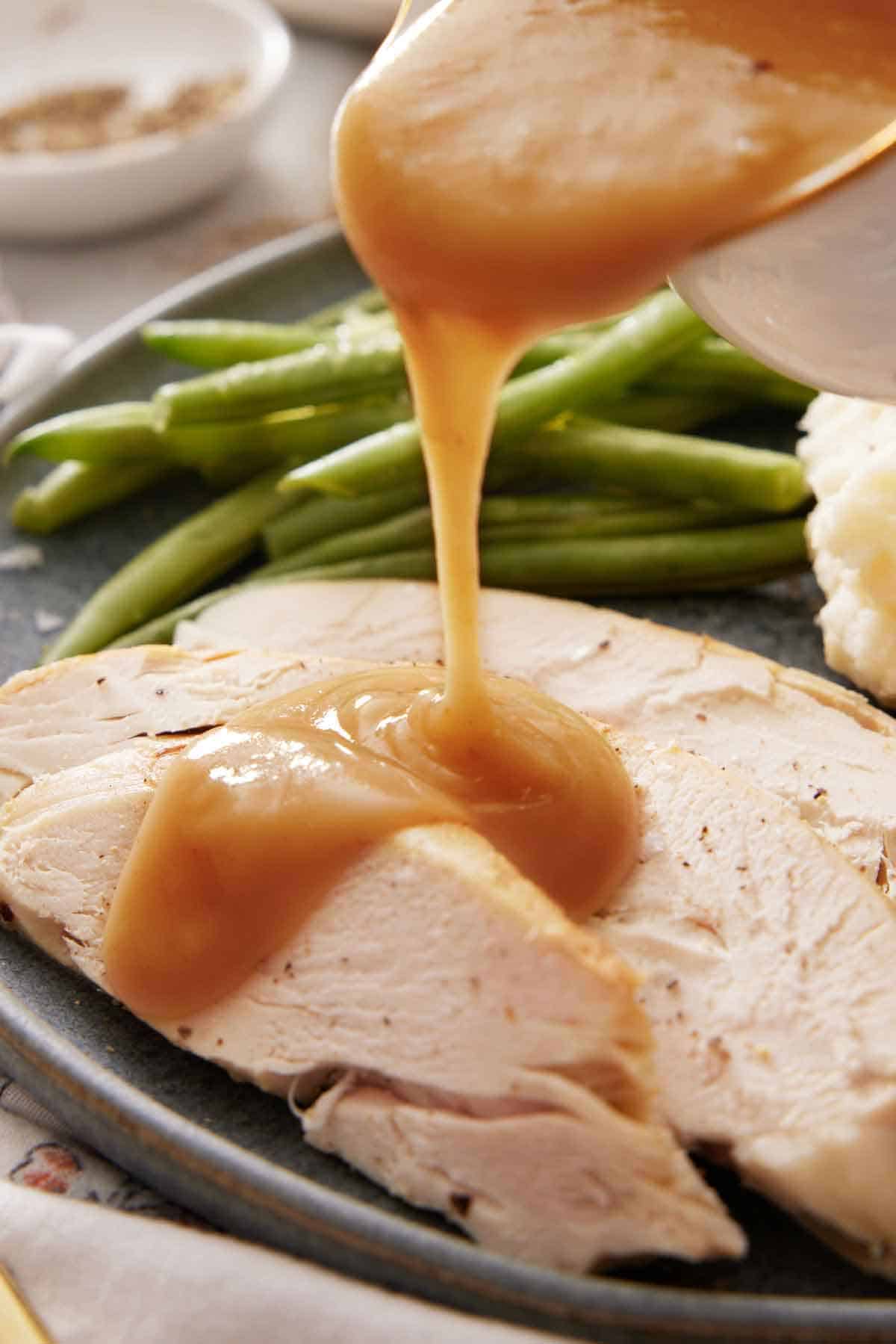
Variations
There are various ways to add flavor to this basic gravy recipe and to adapt it to different dietary restrictions. Here are some ideas:
- Use bouillon with hot water. Use 1 bouillon cube or 1 teaspoon bouillon paste per 1 cup of water or as directed on the package.
- Seasoning ideas: You can add extra flavor with dried or fresh herbs like thyme, sage, rosemary, or poultry seasoning. I use 1 tablespoon of minced fresh herbs or 2 teaspoons of dried herbs for this recipe.
- Add umami: A splash of Worcestershire sauce or soy sauce, or a teaspoon of miso paste, adds depth of flavor. A little goes a long way, so add a little bit, and then taste it.
- Vegetarian gravy: Use vegetable broth, stock, or bouillon.
- Gluten-free gravy: Use a gluten-free all-purpose flour for the roux, or leave out the flour and use cornstarch instead. To do this, reduce the amount of butter to 4 tablespoons. Melt it in the pan as directed, then add the broth and bring it to a simmer. Mix 4 tablespoons of cornstarch with ⅓ cup of room temperature broth or water to make a cornstarch slurry, whisk it into the saucepan, and simmer while stirring until thickened to your liking.
- Vegan gravy: Use vegan butter and a vegetable broth, stock, or bouillon.
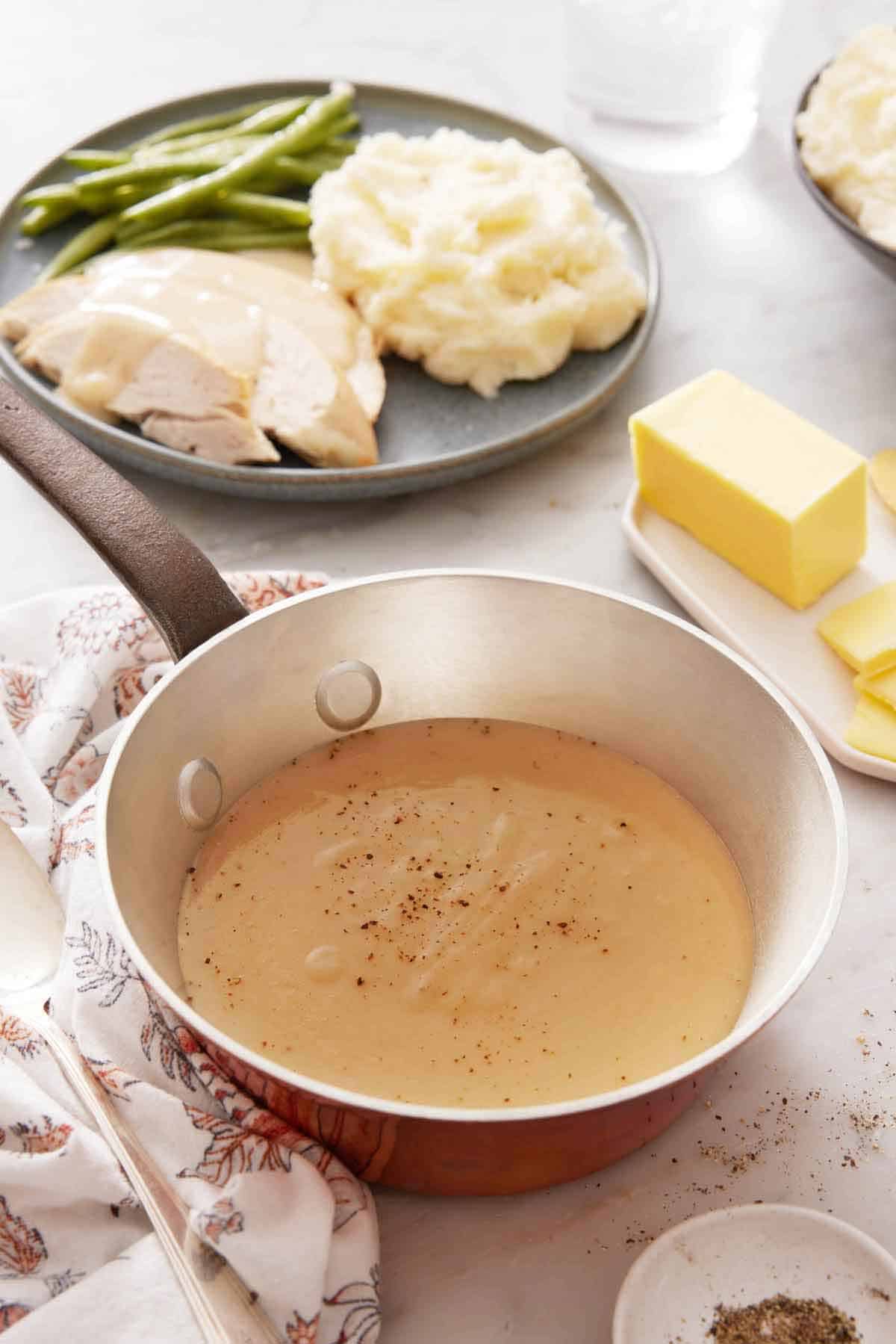
Pro Tips For Making The Best Gravy
Strain the gravy for a silky smooth texture: I like to strain my gravy after it has thickened to catch any potential lumps of flour that didn’t incorporate or little pieces of herb or meat from the drippings. This is totally optional, though!
Add salt and pepper at the end. For the best flavor, finish the gravy with salt and black pepper to taste and additional onion powder if desired. Especially when using pan drippings, it is important to taste the gravy before adding salt or pepper because the flavor of the drippings will vary depending on the seasonings used on the meat.
How To Make Gravy From Scratch
Below, I’ve highlighted portions of the recipe in step-by-step process images along with instructions for making homemade gravy. You can find the full set of instructions in the recipe card below.
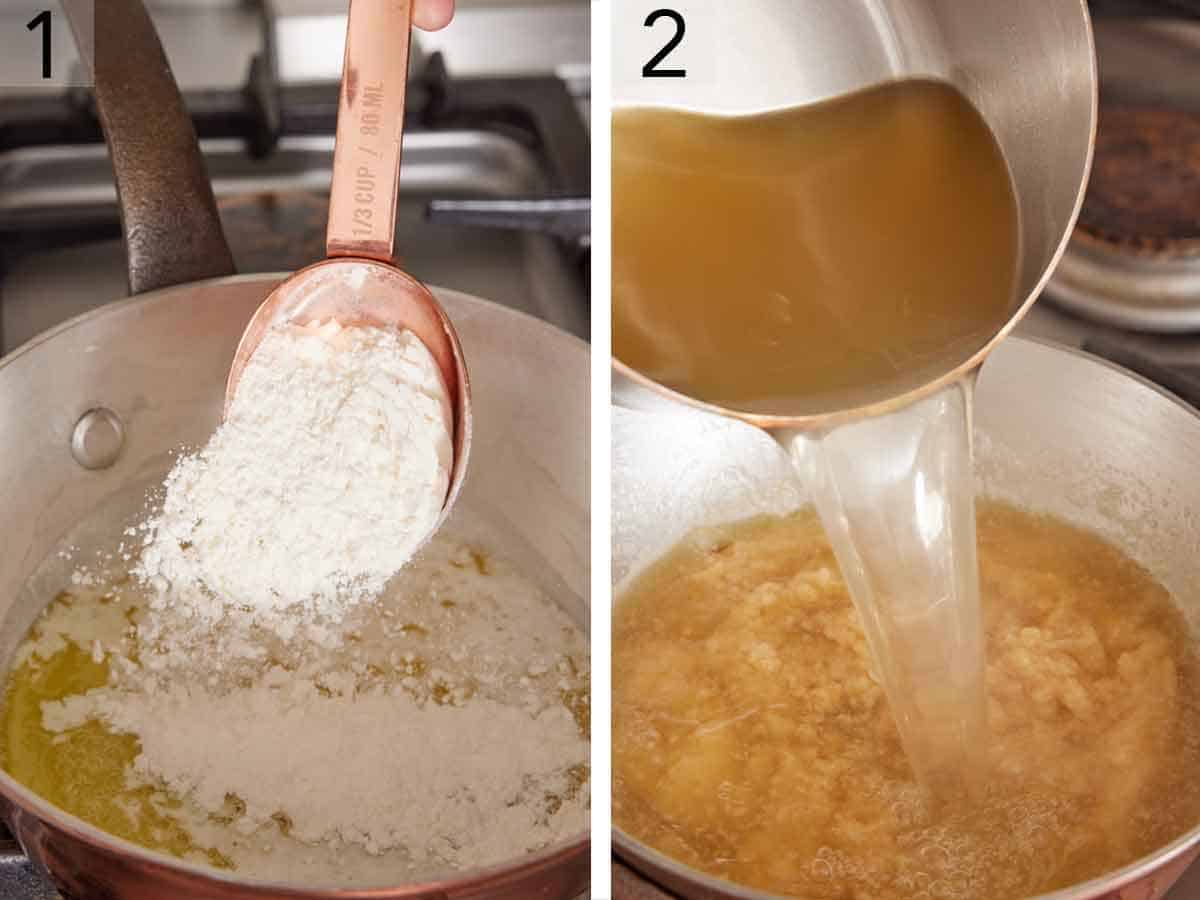
1. Make the roux in a medium saucepan by melting the butter and whisking in the flour. Cook while constantly stirring for about 4 minutes to get rid of any raw flour taste, until the mixture turns golden brown.
2. Continue to whisk and slowly pour in the warm broth. It may immediately look like it’s seizing up with lumps, but just keep whisking and it will become smooth.
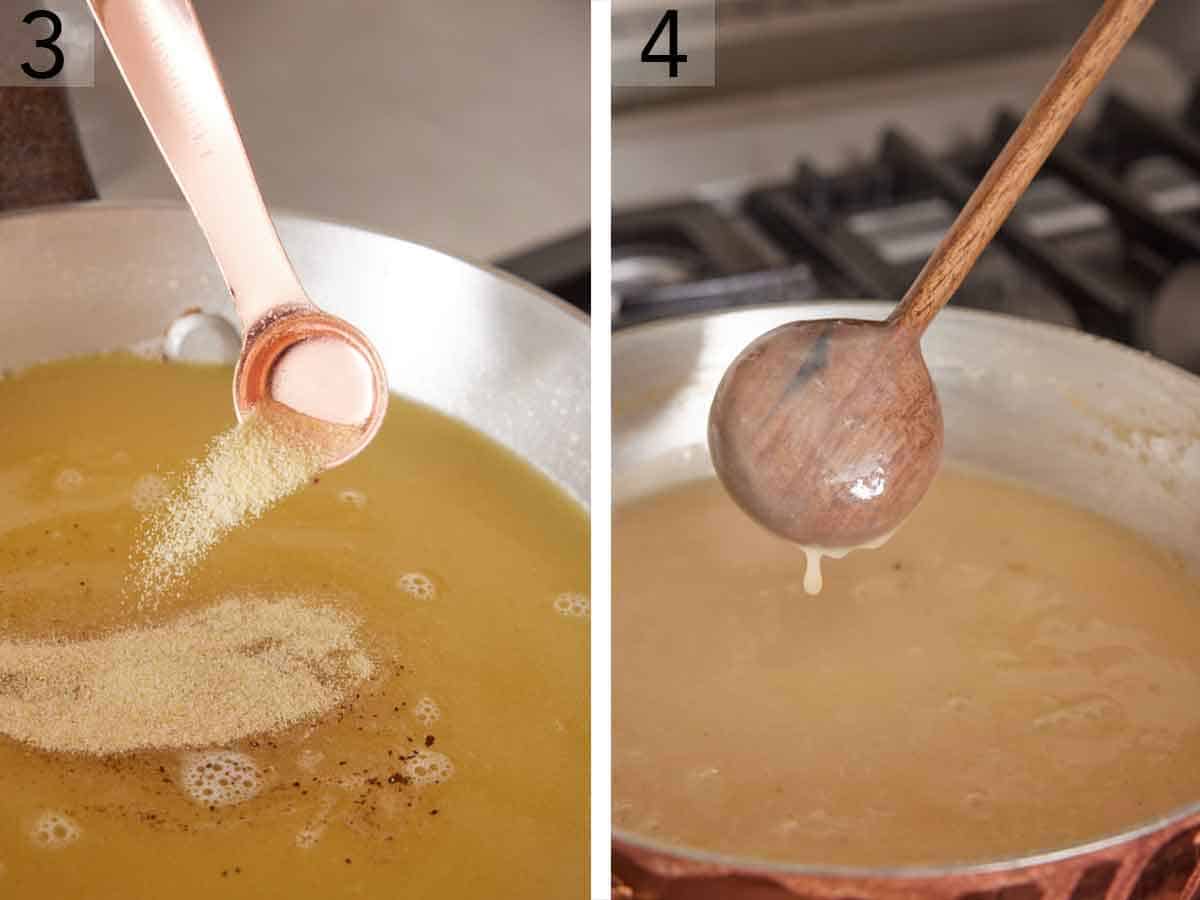
3. Stir in the onion powder before lowering the heat to medium-low.
4. Continue to simmer, stirring often, until the gravy thickens enough to coat the back of a spoon. This will take approximately 6 minutes. Add salt and pepper to taste and serve.
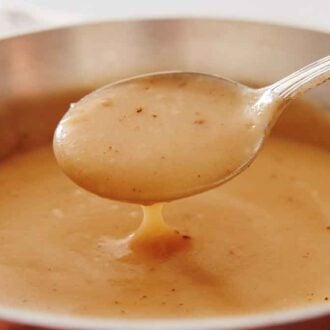
Gravy Recipe
Equipment
- Saucepan
Ingredients
- 6 tablespoons unsalted butter (85g)
- 6 tablespoons all-purpose flour (45g)
- 3 cups warm broth (or pan drippings) (720mL)
- ¾ teaspoon onion powder
- Salt to taste
- Ground black pepper to taste
Instructions
- In a medium saucepan over medium heat, melt the butter. Whisk in the flour, and cook, stirring constantly, until the flour turns golden brown, about 4 minutes.
- While whisking, slowly pour in the broth and whisk until smooth. Stir in the onion powder. Reduce the heat to medium-low.
- Simmer, stirring frequently, for about 5 to 10 minutes, until the gravy thickens enough to coat the back of a spoon. Add salt and pepper to taste. Serve immediately or keep warm until ready to serve.
Notes
- Gravy can be made in advance! Refrigerate it in an airtight container for up to 2 days until you’re ready to serve. It can also be frozen for up to 3 months. Let it thaw in the refrigerator for 24 hours. When ready to serve, warm it gently in a small saucepan over medium-low heat, stirring frequently.
Nutrition
Ways To Serve
Creamy gravy is a welcome addition to any holiday table, as the rich, savory flavor pairs well with roasted meat and a variety of sides. Enjoy it poured over Thanksgiving turkey, garlic mashed potatoes, cornbread dressing, and stuffing.
But don’t feel like you have to save this recipe for the holidays. Homemade gravy is delicious on chicken fried steak, air fryer pork chops, roasted chicken, air fryer turkey breast, roasted lamb, or roast beef. Because this recipe works with any type of broth or pan drippings, you can personalize it for your meal.
This is also the perfect gravy to drizzle over roasted asparagus, air fryer Brussels sprouts, or other vegetables.
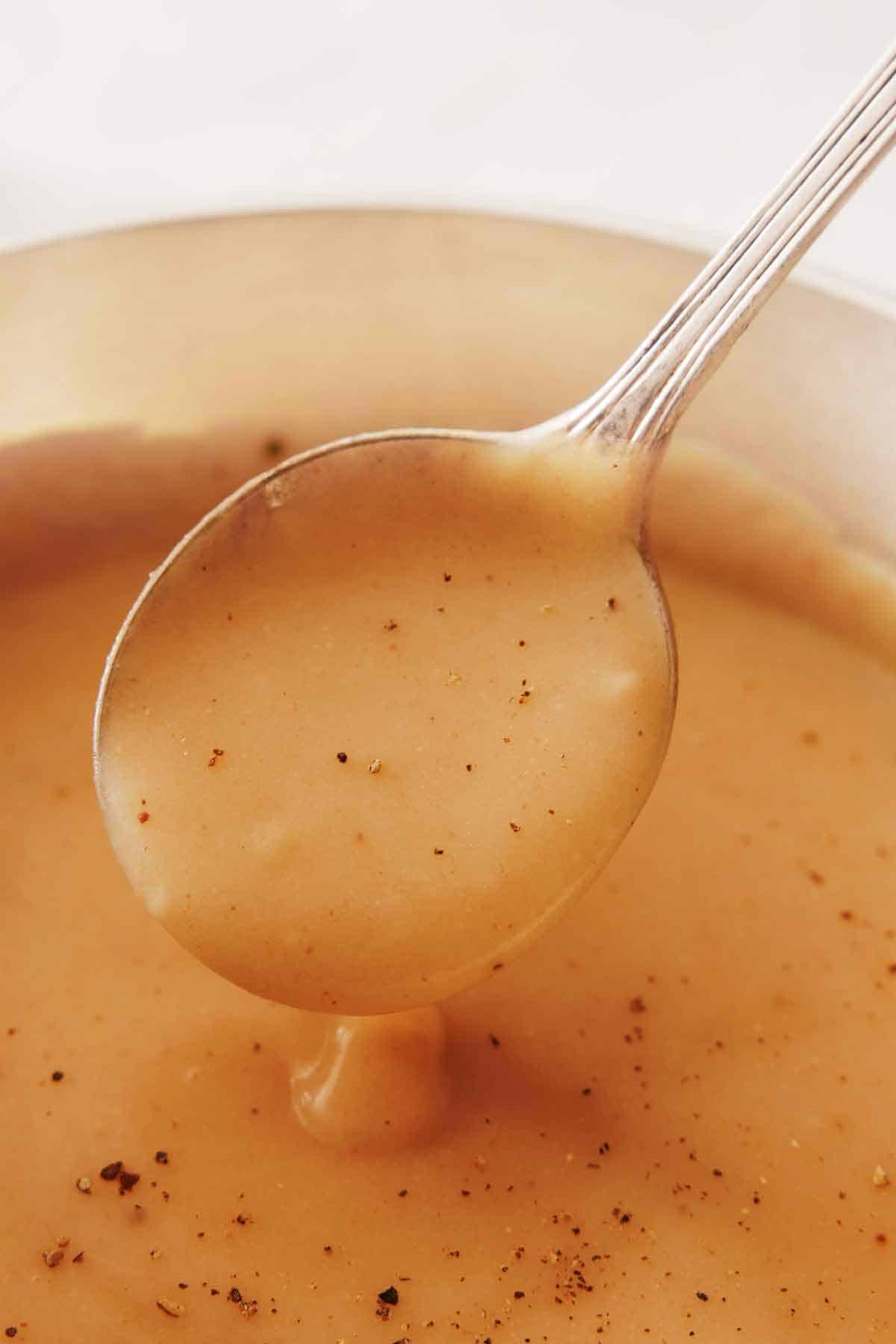
Storage and Reheating
Storing: Store completely cooled leftover gravy in an airtight container in the refrigerator for up to 4 days.
Freezing: Let the gravy cool completely, then transfer it to a freezer-safe container and freeze for 2 to 3 months. Thaw overnight in the refrigerator before reheating.
Reheating: Add the gravy to a saucepan over low to medium-low heat and stir frequently until hot and pourable again. It will be very thick when cold from the refrigerator (don’t be alarmed!) and will seem to “melt” as it is reheated. If it is still too thick once hot, add a splash of broth to thin it out.
More Side Dish Recipes To Try
Try these easy side dishes next!
My classic green bean casserole is an excellent make-ahead side dish option for the busy holidays. Use fresh green beans for a never mushy or soggy casserole!
Roast and mash sweet potatoes and cover them with a crunchy pecan streusel topping to make my crowd-pleasing sweet potato casserole.
Quick and easy boiled potatoes come together in under 30 minutes with just a few simple ingredients. Perfect for busy weeknights!
Speaking of ultra-easy sides, my air fryer broccoli recipe is a must-try! You need just 5 ingredients and 5 minutes of active prep time to whip them up.
Oven roasted carrots are at home on your dinner table on regular weeknights and during the holidays! You’ll love their sweet-savory flavor.
If you’ve tried this quick gravy recipe, then don’t forget to rate it and let me know how you got on in the comments below. I love hearing from you!



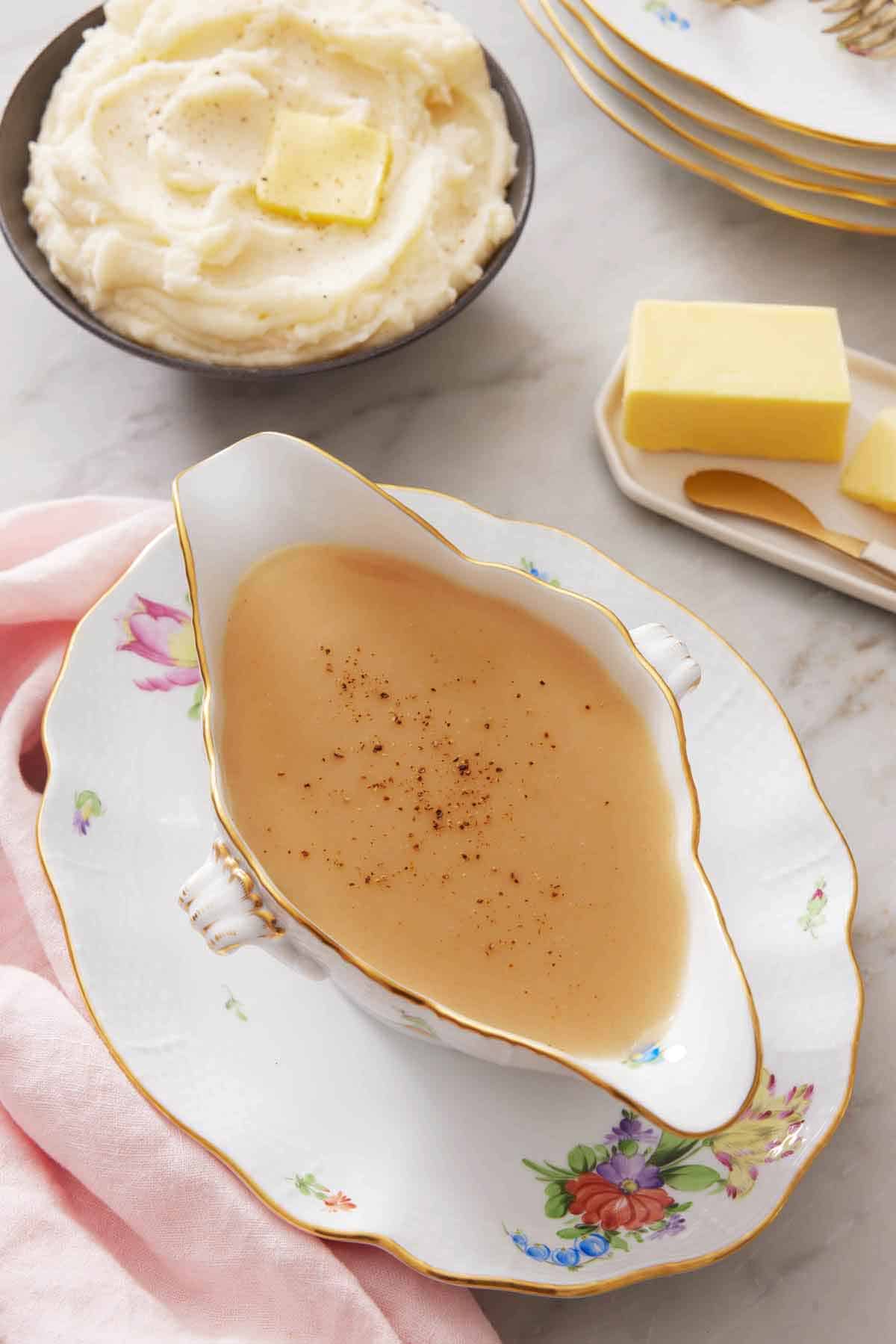
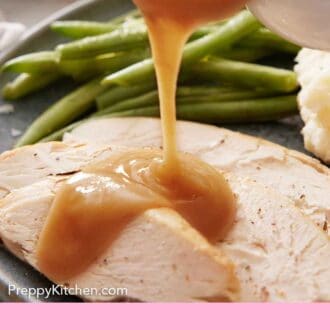

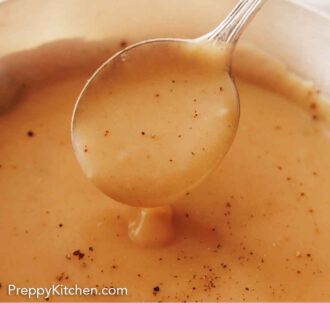


Leave a Reply